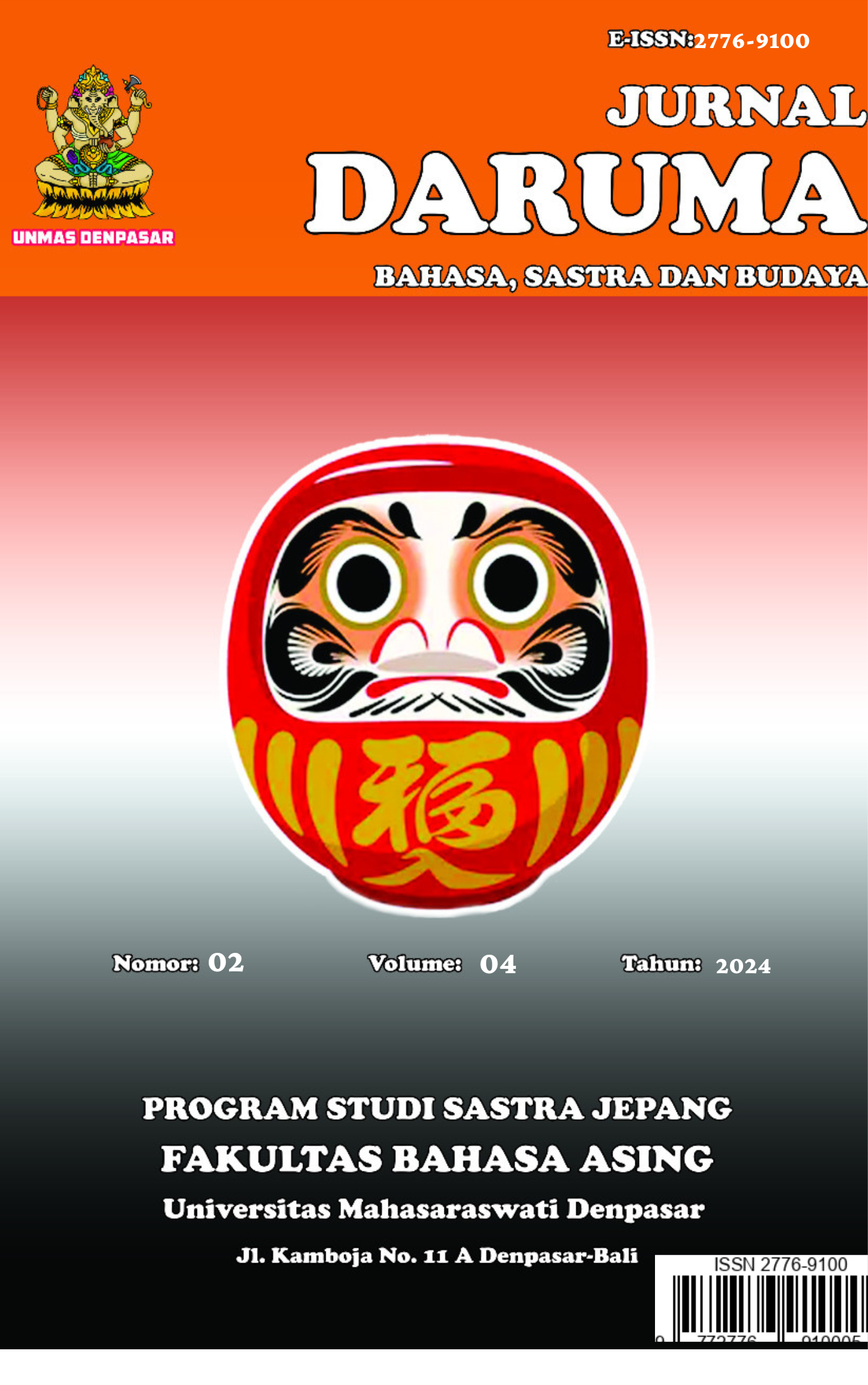ANALISIS LIRIK LAGU PADA SEVENTEEN DAN SMILE FLOWER: KAJIAN SEMIOTIKA RIFATERRE
Keywords:
analysis, lyrics, seventeen, Smile FlowerAbstract
The analysis of the song prioritizes the analysis of its meaning. In song lyrics, there are many figurative meanings that if not studied more deeply will lead to misinterpretation, so that the meaning to be conveyed cannot be digested by listeners and fans of the song. Especially foreign-language songs, which must be translated first, then extra closely examine the message contained so that no misinterpretation occurs. An example of a foreign language song is Japanese. Seventeen, is a K-pop idol who has a successful career in Japan with many achievements. One of their albums titled "Fallin Flower" reached number one on Japan's billboard hot 100. In the album, there is a song "smile flower" which, ordinary people will assume that the content of the song is about smile flowers. For this reason, an in-depth analysis is needed in order to know the original meaning contained in the lyrics of the song Smile Flower. The analysis used a qualitative method with data collection through the lyrics of the song Smile Flower by Seventeen. The theory used is Riffaterre's Semiotics with a focus on non-continuity of expression through meaning replacement, meaning deviation, and meaning creation. This song has a meaning about universal love. Where, the character "I" is always comfortable by the side of "you" so that they can show all expressions such as happy, and sad without having to worry about separation. Because the character "I" will always try to make "you" happy so that "you" can always smile beautifully like a blooming flower. This is evidenced by the phrase "egao no hana sakaseyou. Sono egao, haru ni naru yo" (The smiling flower is blooming. For the sake of that smile, I will become spring. Where the lyrics are emphasized by repeating them three times.
References
Billboard.com. (2020). Seventeen Lands at No. 1 as Gen Hoshino’s Viral ‘Dancing on the Inside’ Debuts on Japan Hot 100. Billboard Japan. Diambil dari https://www.billboard.com/music/music-news/seventeen-fallin-flower-gen-hoshino-social-media-dancing-on-the-inside-japan-hot-100-chart-9354426/
Mukhtar. (2013). Metode Praktis Penelitian Deskriptif Kualitatif. Jakarta: Referensi (GP Press Group).
Pradopo, R. D. (1995). Beberapa Teori Sastra, Metode Kritik, dan Penerapannya. Yogyakarta: Pustaka Belajar.
Ratih, R. (2016). Teori dan Aplikasi Semiotik Michael Riffaterre Cetakan Pertama. Yogyakarta: Pustaka Pelajar.
Seventeen.Jp. (t.t.). Seventeen Discography. Diambil 2 April 2023, dari https://www.seventeen-17.jp/posts/discography?category=CD-JP-
Smile Flower - Seventeen. (t.t.). Diambil 28 Agustus 2023, dari https://open.spotify.com/track/054sQZ2qmw0Ya7N0XSxl3j?si=f3b2e6996b034273
Sumja, P. (2020). Representasi Makna Kesendirian pada Lirik Lagu “Ruang Sendiri” Karya Tulus. Humaniora, 50–58.
Suryaningtyas. (2022). Implikatur Metafora Pada Lagu Jepang Karya Seventeen: Fallin Flower (Maiochiru Hanabira). Universitas Negeri Jakarta, Jakarta. Diambil dari http://repository.unj.ac.id/22977
Umaya, M., & Harjito. (2017). Penelitian Pembelajaran Sastra. Semarang: Universitas PGRI Semarang.





